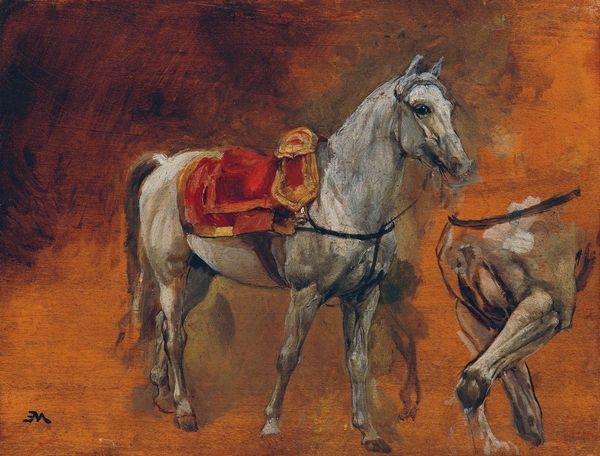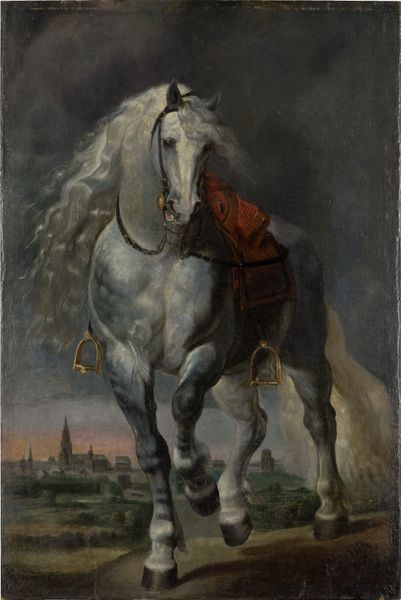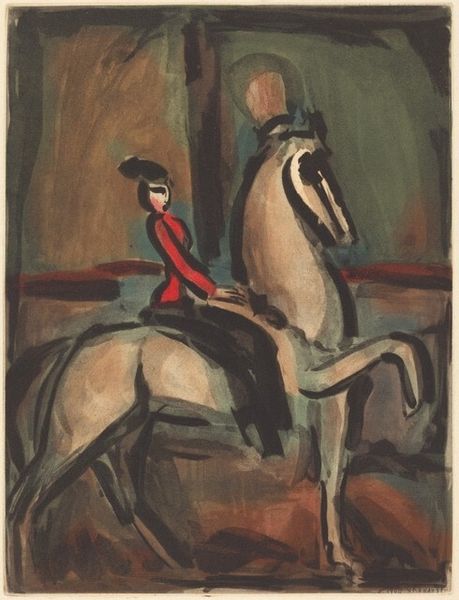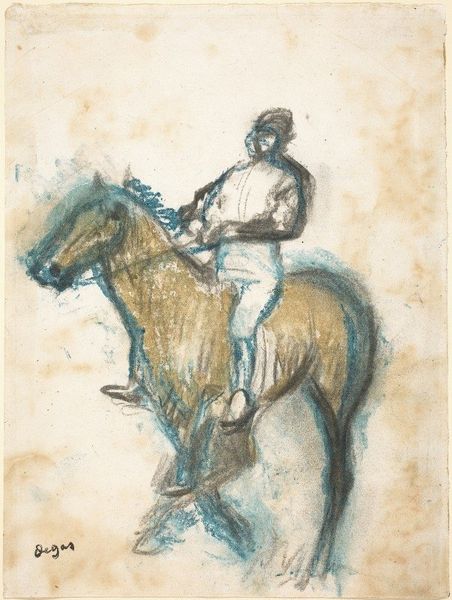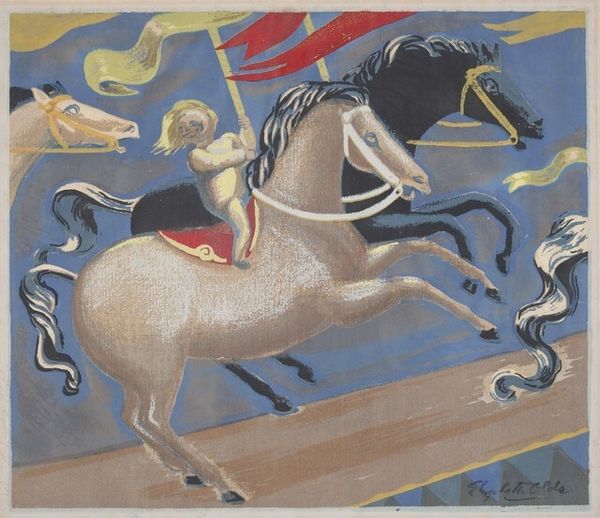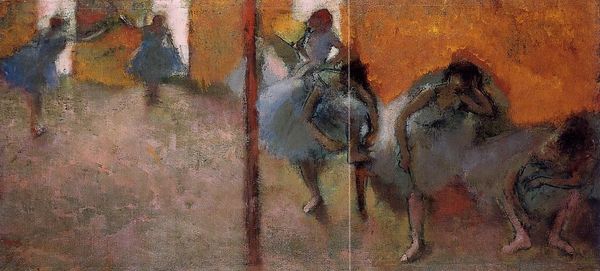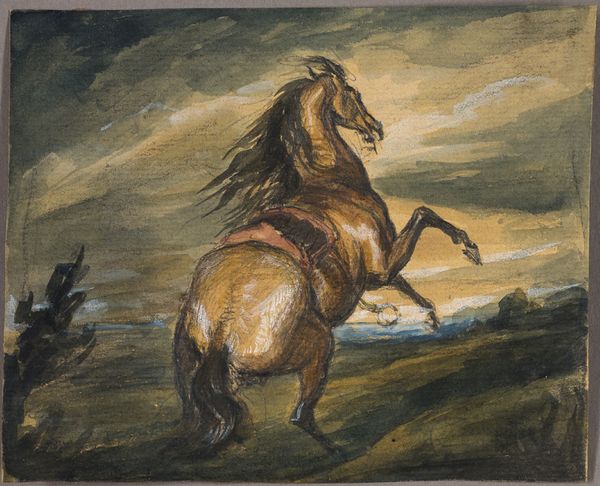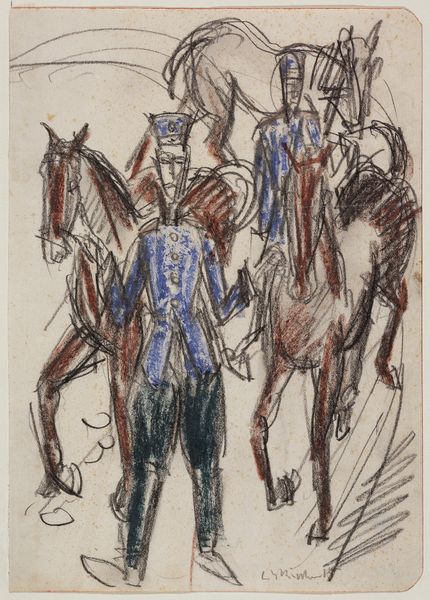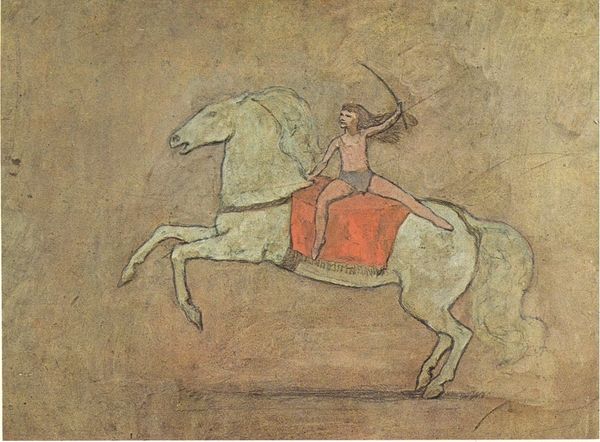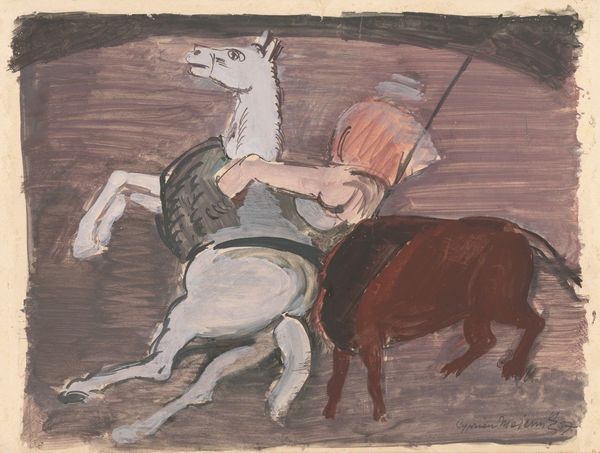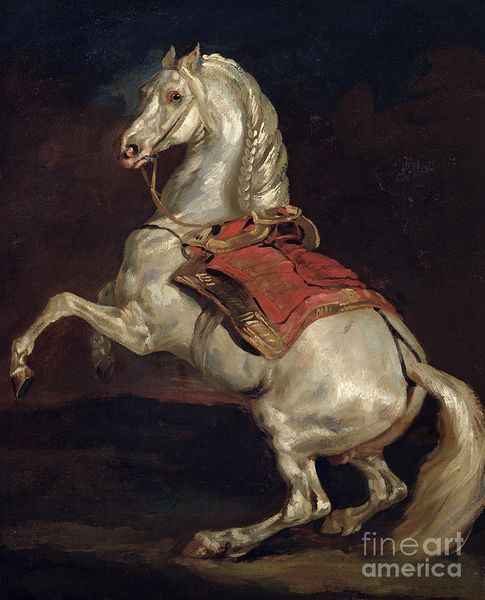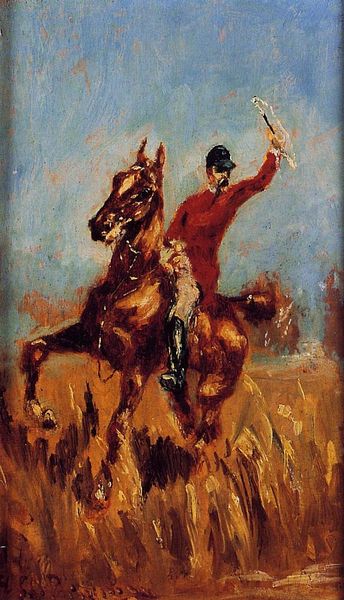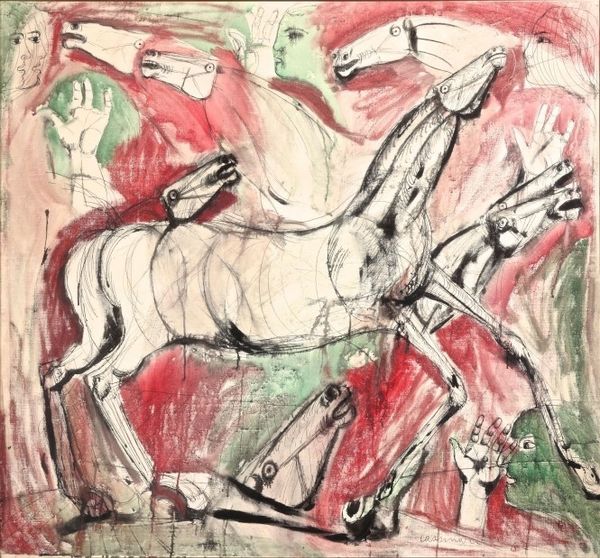
Dimensions: 66 x 81 cm
Copyright: Public domain US
Curator: It strikes me immediately as raw, almost violently free – the horse straining against a pastel sky like a dream on the verge of shattering. What’s the story behind Raoul Dufy’s “Le Cavalier Arabe (Le Cavalier Blanc)” from 1914? Editor: Well, if we're going to dive into it, we've got to consider that 1914 was a turning point in European history and for artists like Dufy, already a well-established painter who was experimenting with abstraction after dabbling in Fauvism. Curator: Abstraction definitely! The rider’s face is merely suggested, a splash of color against the energetic brushstrokes that define the horse’s musculature. It’s like he’s captured the *idea* of a rider, rather than a specific person. Almost anyone could have painted this portrait! Editor: I understand why you might come away thinking this is accessible. The work bears resemblance to other popular artforms with a broader consumption audience, like illustration. And with its accessible subject, “The Arabian Rider”, its technique echoes that which was common in decorative and commercial artwork at the time. Think textiles or even ceramics; Dufy's early experience had a real impact here. Curator: Interesting perspective. To me, though, there is also a sense of profound restlessness. Look at the way Dufy applies the oil paint! He doesn’t seem to care about smoothness or realism, prioritizing emotional impact over representational accuracy. It is all frantic. Almost as if, right before painting the work, he has undergone trauma. I suspect his state of mind informed the painting and how "raw" it is, as you said. Editor: That might very well be, and it may also point to the ways in which commercial practices were encroaching upon high art; many considered this the beginning of art’s move toward broader economic circulation, and this changed painting irrevocably as a fine art practice. Curator: Well, it is good for the audiences, and people looking at this artwork now can take so much away from it, whatever historical perspective we bring to bear. Editor: Yes, and hopefully, with a closer examination of both process and feeling, we find new meanings for ourselves, and this piece lives anew.
Comments
No comments
Be the first to comment and join the conversation on the ultimate creative platform.
